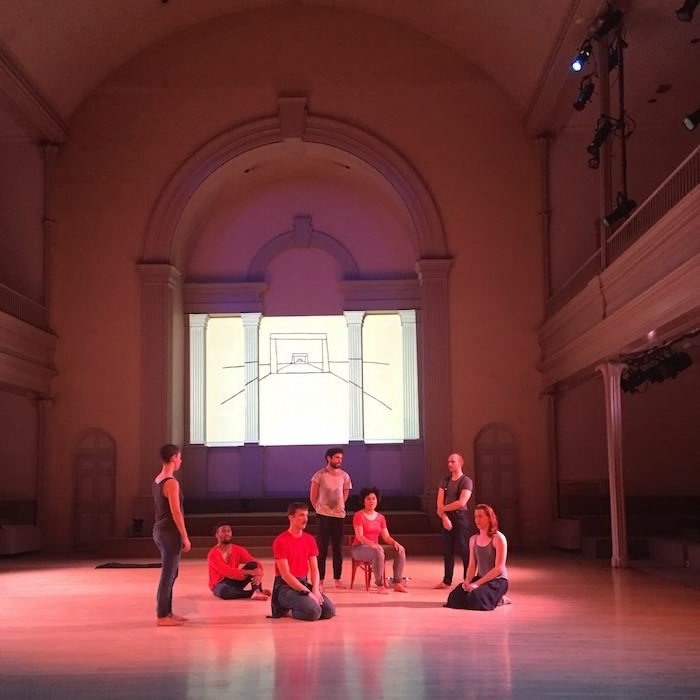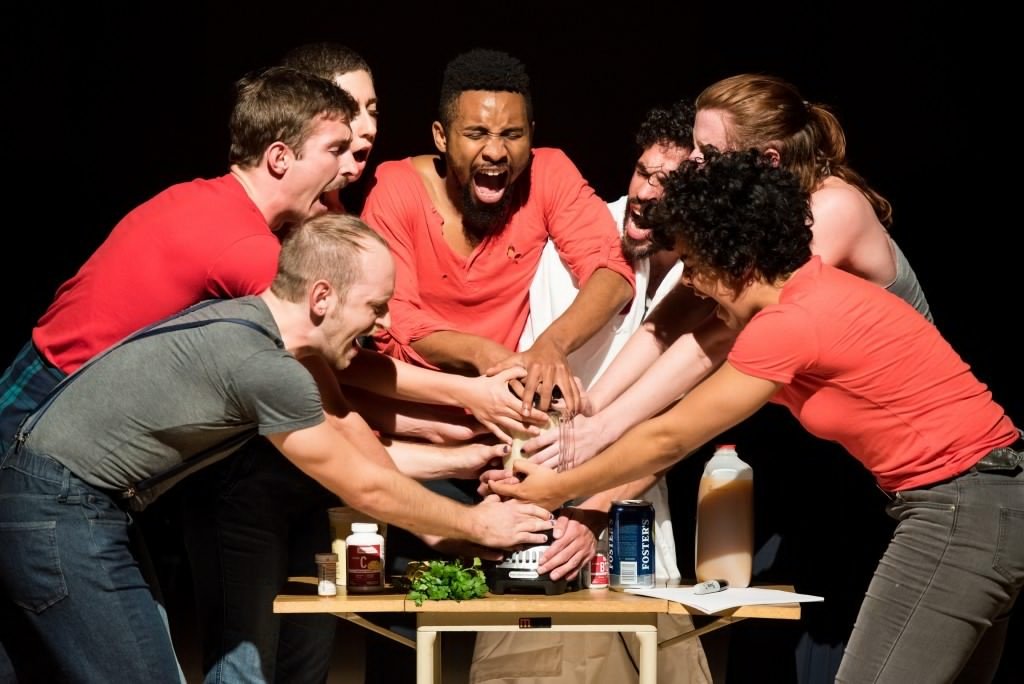“Are you even here? You’re a relic of a dying empire. The ghost of a glorious future that never came.”
-Sarah Gancher, Russian Troll Farm
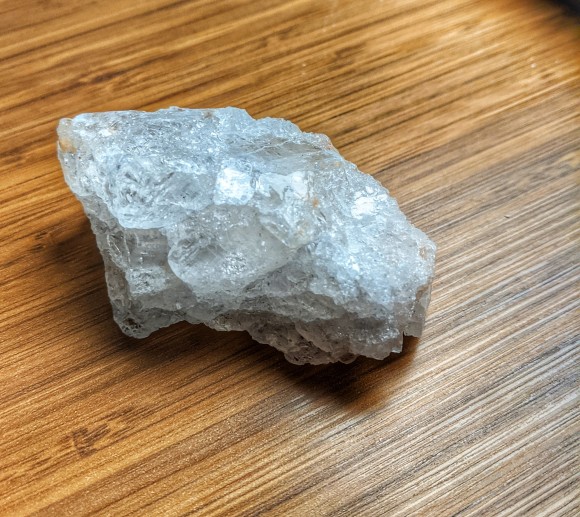
Live:
I was lucky to see about 15 shows – almost all outstanding – before doors started slamming shut. These 8 grabbed me hard and wouldn’t let go. Their memories are still burned into my brain this many months later. Photos are taken from press either given directly to me or on the company/creator’s official website.
- Salt by Selina Thompson, directed by Dawn Walton (01/11/2020 – Public Theatre, Under the Radar, NYC) – Sometimes – and this might be my favorite part of seeing theatre and especially my favorite part of Under the Radar, I see work by a playwright who’s new to me and the voice alone burns a layer of skin off me and makes me feel both more and differently. Selina Thompson’s personal-historical-poetic dive into the Transatlantic Slave Trade, Salt, masterfully acted by Rochelle Rose, did that to me this year. I walked out babbling and as hungry for more of her work as any writing of the last decade.
- Body Comes Apart by Molly Lieber and Eleanor Smith (01/12/2020 – New York Live Arts, NYC) – This vivisection of expectations, trauma, and freedom balanced an unsparing dedication to truth with a supernova love for the world. Body Comes Apart was a physical hour of dance, and acting was a whirlwind from which I couldn’t look away. It avoided platitudes and simplification but burned with a clarity that made its unanswered questions cut even deeper. I could have seen this three times and still tried to grasp it.
- Medea by Simon Stone after Euripides, directed by Simon Stone (01/12/2020 – BAM, NYC) – I’m a sucker for the Greeks and I’d never seen Bobby Cannavale on stage. Something felt very fitting about seeing Stone’s ferocious, knives-out take on Euripides here in the same theatre I saw my favorite Hedda Gabler. The adaptations to the play were interesting, aided by vibrant video. My brain pinballed between the remarkable acting – Cannavale, Rose Byrne, Dylan Baker – and the wrenching image of ash falling on that pristine white stage, both stuck with me well after the next day’s flight home.

- Or by Liz Duffy Adams, directed by Rowan Winterwood (01/17/2020 – Actors Theatre) – Actors Theatre’s relationship with MadLab for smaller-scale indoor plays continued to bear fruit this year, even as they had to cancel what looked like an exciting outdoor season. Or was a delightful drawing room sex romp around the fascinating historical character Aphra Behn (played brilliantly by Michelle Weiser) with crackling support from Andy Woodmansee and McLane Nagy as the other legs of the triangle. Winterwood’s sizzling direction made this a hot, funny winter diversion when I needed it most.
- The Motherfucker With the Hat by Stephen Adly Guirgis, directed by Chari Arespacochaga (01/23/2020 – Short North Stage) – Short North Stage doesn’t always get enough credit for their dark, low-to-the-ground plays in the Green Room. Their Motherfucker With the Hat was another triumph in that lane. Arespacochaga directed it with the right mix of Greek tragedy and cage match, a stellar cast orbited around a volcanic Raphael Ellenberg.
- The Bridge Called My Ass by Miguel Gutierrez (01/25/2020 – presented by the Wexner Center) – Gutierrez’s bilingual piece mixed puns, everyday action, and flights of fancy into something I’d never seen before. I didn’t always understand it but I was always enraptured.
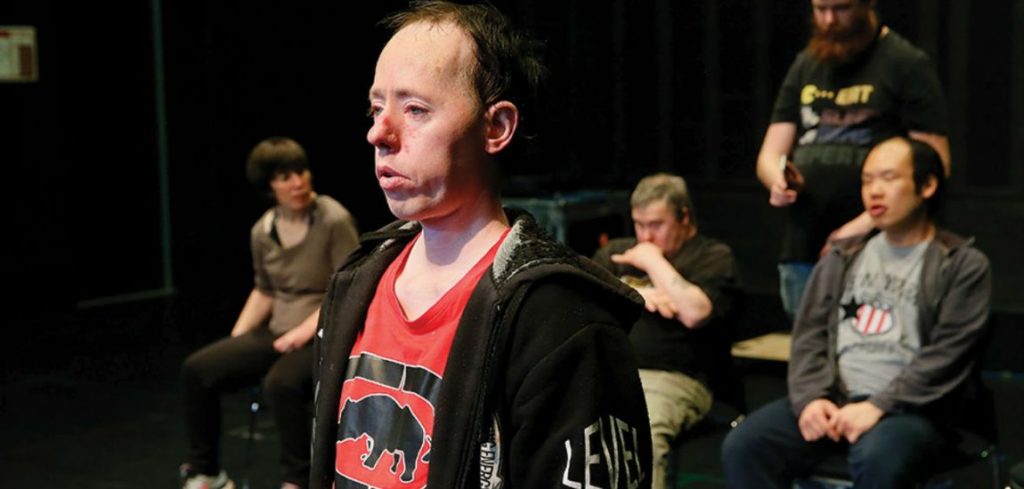
- A Doll’s House Part 2 by Lucas Hnath, directed by Michael Garrett Herring (01/30/2020 – Red Herring Theater) – There have been a few times I’ve seen a Columbus production I felt improved on New York, and this was the most recent example. Herring stripped away the ba-dum-bum sitcom rhythm that sank the Broadway version of this for me the night I saw it and made Hnath’s sequel to Ibsen glow like a bruise. All stellar performances, especially Sonda Staley’s for-the-ages take on Nora.
- The Shadow Whose Prey The Hunter Becomes by Back to Back Theater (02/13/2020 – presented by the Wexner Center) – One of my favorite previews I’ve ever written. I was so glad I held off, skipping this at Under The Radar so I could go into it cold when it played my town. A more complicated bit of metatheatre than the first work of theirs I loved, Ganesh Vs The Third Reich, but brillant and arresting. A look at how much “acting” we all do in making our voices heard and how much marginalized people have to work past just to get their voices heard, to not be seen as a monolithic interest. If this was the last live performance I saw, I went out high.
Online:
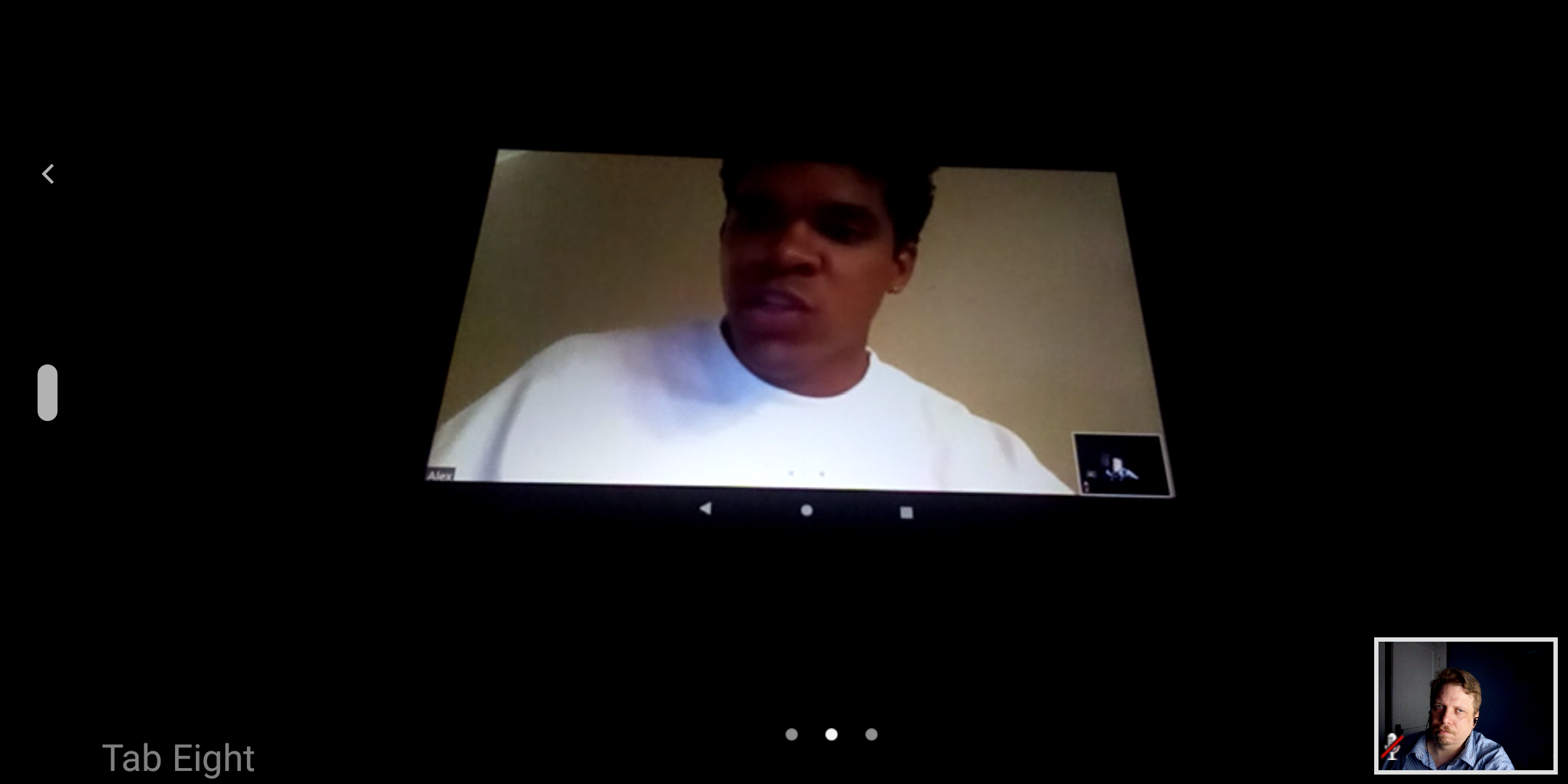
Theatre feels like a circuit between the stage and the audience, even more than music, to me. But for me, this immediate, physical art reaped the greatest rewards as companies tried to find ways to make work that still felt like theater while wholly embracing the new media. I deeply hope many of us can find ways to continue to make things accessible after we can all gather in a room again.
It would be a true shame for these opportunities for people with disabilities or other reasons not to be part of the physical exchange of energy, to finally get a wider range of options and then have them taken away.
Things that moved and inspired me with virtual theatre:
Zoom readings run by local stalwarts Krista Lively Stauffer and Tim Browning with their Virtual Theatre Project gave me the chance to catch Douglas Whaley’s phenomenal The Turkey Men (I missed its premiere run when I was in Italy last year), revisit the terrific Red Herring two-hander Thicker Than Water, and dip into remarkable work from our astounding pool of talent.
Established companies pivoted with aplomb and grace:
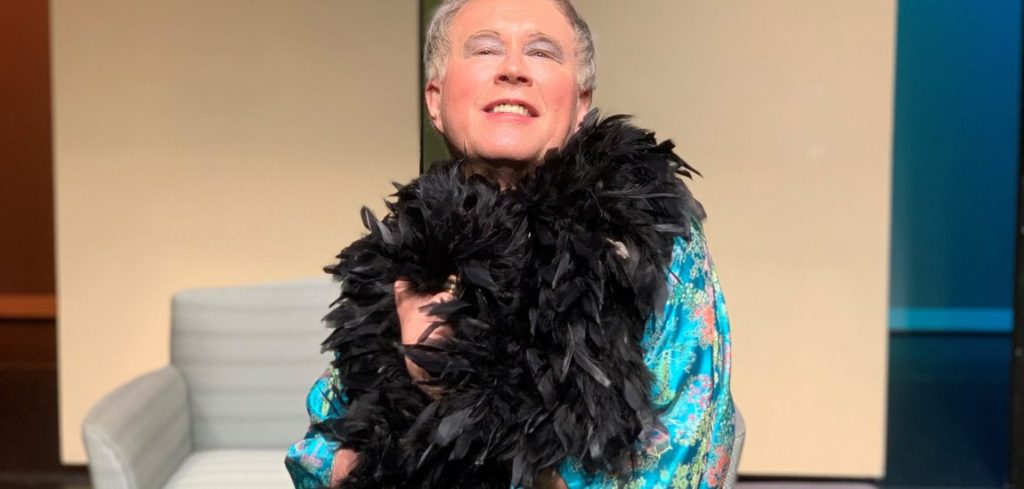
- Short North Stage revisited shows they’d loved and couldn’t find space for in their schedule previously like the moving early Andrew Lippa John & Jen and the delightfully raunchy Off-Broadway hit by Howard Crabtree and Mark Waldrop When Pigs Fly. They also used their connections to get new material for these revivals while also building new work like Quarantine With the Clauses.
- New CATCO Artistic Director Leda Hoffmann met the challenge of her first season in town coinciding with the pandemic and excelled with marvelous Idris Goodwin shorts, Plays For an Antiracist Tomorrow, bringing in legacy CATCO artists as well as fresh blood, then acclaimed Julienna Gonzalez adapted her Detroit Christmas Carol into a Columbus version under Hoffmann’s direction.
- Joe Bishara came into his own with Dublin’s Abbey Theatre giving life to exciting pieces from artists like Mark Schwamberger and Nikki Davis.
- Red Herring provided astounding social dramas and made steps toward a hybrid experience.
The plethora of archival work was an embarrassment of riches, from American Conservatory Theatre’s take on Lydia Diamond’s Toni Stone to the Goodman’s hilarious and heartbreaking Jocelyn Bioh’s School Girls or The African Mean Girls Play.
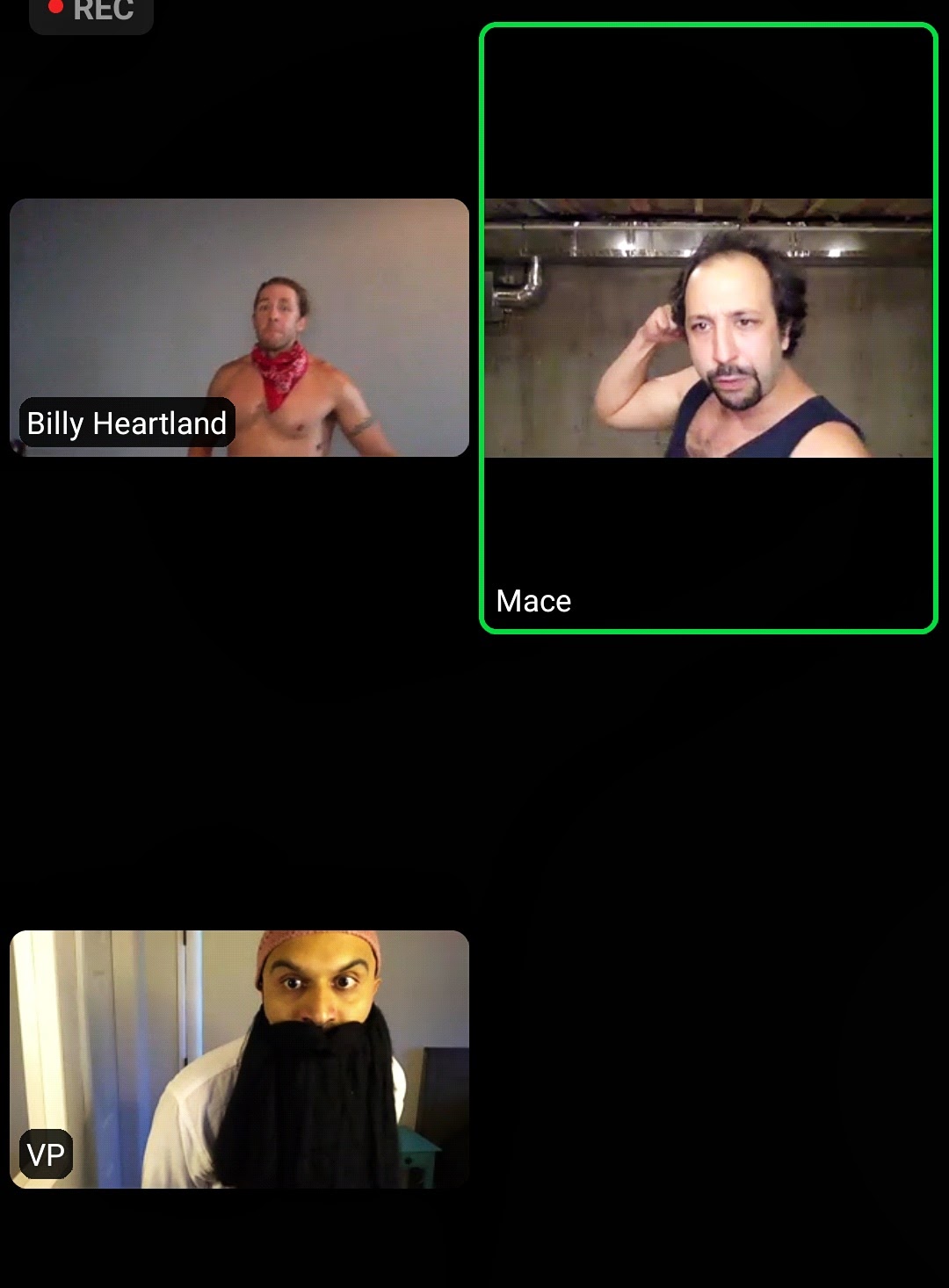
The New Group, Play-Per-View, and more presented riveting reunion readings, giving new life to great plays from past seasons. I especially loved Beth Henley’s The Jacksonian, Kristoffer Diaz’s The Elaborate Entry of Chad Deity, and Suzan-Lori Parks’ Death of the Last Black Man in the Whole Entire World.
I was in awe of groups that created new work from tools not intended for this purpose. Magic came from relatively straightforward narrative work like Mona Mansour’s The Beginning Days of True Jubilation, Theatre of War’s Antigone in Ferguson, and Sarah Gancher’s Russian Troll Farm. to more ephemeral work like We Need Your Listening by Velani Dibba, Ilana Khanin, Elizagrace Madrone, Stephen Charles Smith, Bill T Jones and Arnie Zane’s Come Together Revisited, and Theatre Mitu’s </remnant>.
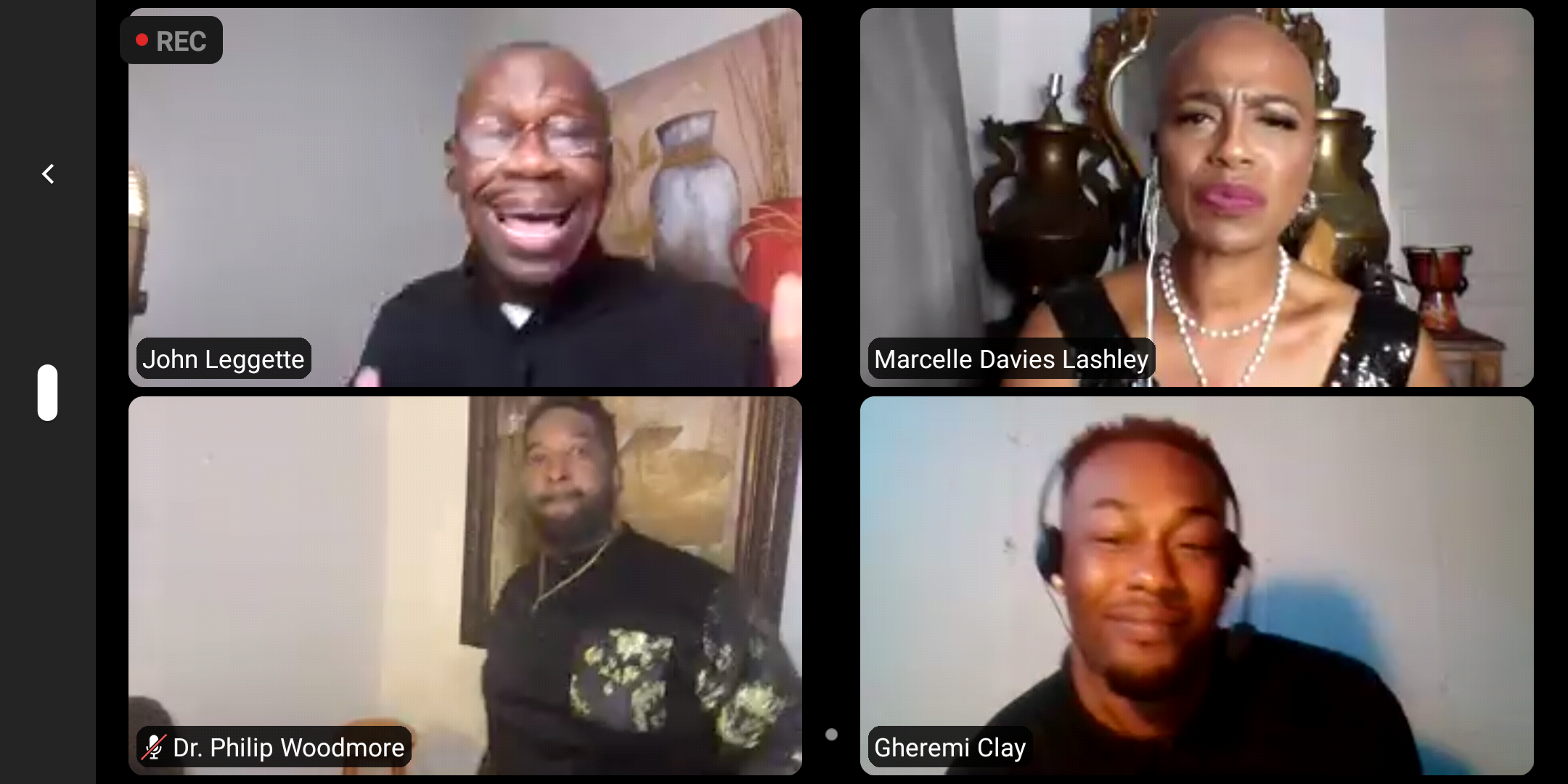
Even in the dark times, there was still joy if you looked, and I am as grateful as ever people took on these burdens to bring it to us.
